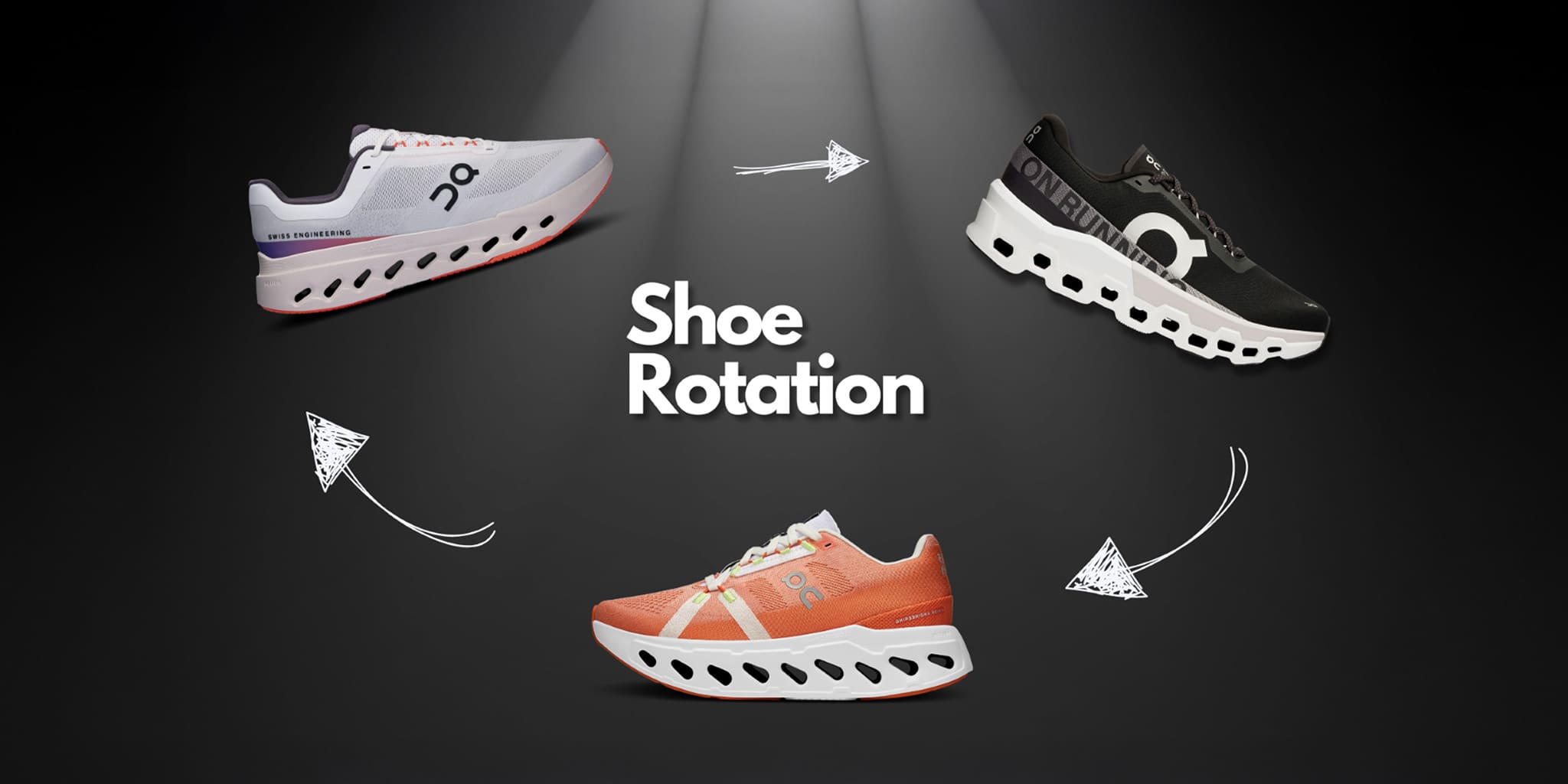If you're a runner getting serious about performance, injury prevention, and comfort, there's one strategy you might be overlooking: rotating your running shoes. This isn’t just a runner’s excuse to own more pairs — it’s a proven way to reduce injury, extend shoe life, and optimise each training session. Whether you're clocking your first 5K or training for a marathon, here’s why shoe rotation matters — and how to do it right.
What Is Running Shoe Rotation?
Shoe rotation means alternating between two or more pairs of running shoes throughout your training week. Each shoe serves a specific purpose — from daily runs to speedwork or trail adventures — and switching between them gives your feet and joints a break from repetitive strain.
Why Rotate Running Shoes?
1. Injury Prevention
Rotating shoes introduces slight changes in foot strike and joint loading, helping to prevent overuse injuries. Each shoe offers different support and cushioning, allowing your body to adapt and recover more effectively between sessions.
2. Extended Shoe Life
Cushioning materials like EVA foam need time to decompress. Giving shoes a day or two between runs allows them to bounce back, maintaining performance and durability over more kilometres.
3. Optimised for Every Workout
Different runs demand different shoes. Lighter pairs for speed, cushioned options for long distances, and grippy outsoles for the trail. Trail shoes offer durability and grip, while road models prioritise responsiveness and comfort.
4. Improved Running Form
Varying heel-to-toe drops and support structures encourages subtle biomechanical adjustments. Over time, this can improve posture, foot strike, and overall running efficiency.
How to Build Your Shoe Rotation
Start with Two Pairs
A simple rotation includes one daily trainer and one speed-focused shoe:
- Daily Trainer: Cushioned and durable for long or recovery runs. Try the On Cloudflyer 5 or Cloudrunner 2.
- Speed Shoe: Lightweight and responsive for intervals and tempo days. Consider the Cloudsurfer Next or race-ready Cloudeclipse.
Adapt to Your Terrain
If you run trails or rugged surfaces, a trail-specific model is essential. Go for the Cloudvista 2 or the Cloudultra 2 for max performance on rough ground.
Vary Cushioning and Drop
Mix shoes with different heel drops and stack heights to promote muscular and biomechanical balance.
Assign Shoes to Specific Runs
- Long Runs: Use cushioned models like the Cloudeclipse.
- Speedwork: Choose light, energetic shoes like the Cloudsurfer Next.
- Trails: Opt for grip and stability with models like the Cloudvista 2.
Pitfalls to Avoid
- Skipping Break-in Time: Ease into new shoes gradually to avoid blisters or muscle strain.
- Overthinking Your Rotation: Two well-chosen pairs are better than five unused ones.
- Ignoring Discomfort: If a shoe feels wrong, stop using it. Listen to your body.
Recap: Why Rotation Works
- Injury Prevention: Reduces repetitive strain.
- Extended Shoe Life: Preserves foam integrity.
- Workout Matching: Enhances performance across run types.
- Better Form: Encourages subtle biomechanical variety.
Rotating your running shoes isn't about fashion — it's about function. It helps you train smarter, stay injury-free, and enjoy your runs more. Plus, let’s be honest — picking the right shoe for the day is part of the fun.
Explore all On shoes at Tifosi Sports and build your perfect rotation today.

Share:
Why Post-Marathon Recovery Matters & How to Do It Right
Training Blocks: What They Are & Why They Work